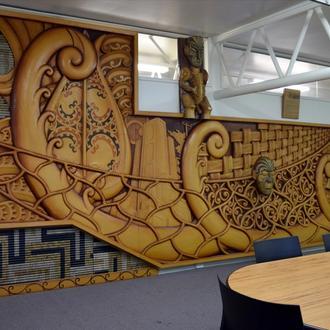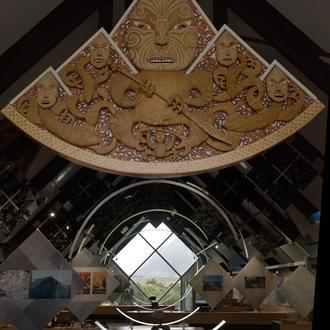Department of Conservation
Also known as:
- Te Papa Atawhai
2 Artworks
The Department of Conservation Te Papa Atawhai(DoC)
Established in 1987, through the Conservation Act 1987, DoC is composed of the New Zealand Conservation Authority and 15 geographically distributed conservation boards, is "charged with conserving New Zealand’s natural and historic heritage."
DoC manages approximately 30% of the nation's land area consisting of "native forests, tussocklands, alpine areas, wetlands, dunelands, estuaries, lakes and islands," also national forests, maritime parks and reserves, river margins, some coastline, and many offshore islands. These lands and waterways are protected for scientific, historic, cultural and recreation purposes.
Regional and central DoC premises have a prominent function representing the diversity of relationships active within the national conservation estate. Sites within the national conservation estate have been significant in Te Tiriti O Waitangi settlement processes, for example Aoraki/Mt Cook. Waikaremoana and Rotorua Lakes, important areas for Māori relations with the Crown via DoC, have had significant public artworks commissioned for them.
See also:
Simon Nathan, 'Conservation – a history - Changing organisations and ideas, 1985–2010s', Te Ara - the Encyclopedia of New Zealand.

Cliff Whiting and members of Arowhenua Runaka, 'Aoraki and His Brothers' (1988), Department of Conservation Visitors Centre, Aoraki Mt Cook
Image: Bronwyn Holloway-Smith, Public Art Heritage Aotearoa New Zealand, 2021


